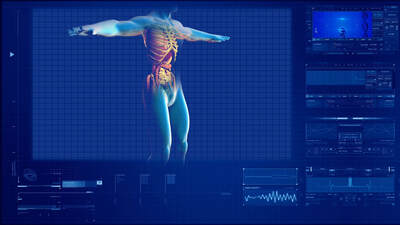
Chinese medicine goes on to say how the subtle aspect of food that I call the energetics of food is sent to the Lungs and the solid part, the nutrients and fiber, is sent down to the small and large intestines.
The analogy of the cooking pot is very important in understanding the digestive process. The digestive process consists of first creating a 100 degree soup in the stomach. In my Full Spectrum Macrobiotic approach, I combine a modern biological understanding with the traditional energetic model. Since the body is 98.6 degrees F, the digestive system can be said to work better in a warm environment.
Whatever facilitates the creation of a 100 degree soup benefits digestion and whatever impedes it will weaken digestion. Since food is a very important element if not the most important in creating health, supporting digestion is crucial.
If the solid portions of food are jam-packed in the stomach, if digestion is impaired by cold or chilled foods and liquids, or too many hard to digest foods are eaten then stagnant food may accumulate in the stomach. This makes the stomach overwork to burn off the excess. This excess heat creates hunger which creates a loop of a vicious cycle by eating more and consequently fostering more heat. Stomach heat can eventually waste the stomach yin or fluids causing chronic thirst and a preference for cold drinks and chilled foods.
If the watery parts of food and drink jam up the digestive system swelling will develop. This in Chinese medicine is called dampness. This inhibits digestion in one sense by putting out the digestive fire. Over time swelling or dampness mixes with stagnant food causing phlegm that gunk’s up the system and slows down the flow of chi energy. Chi is the motivating force in the body that activates your organs and the flow of blood circulation.
According to this model, humans should eat:
- mostly cooked foods with varying amounts of grains and cooked vegetables
- some fruits
- moderate amounts of animal based foods
- other natural foods
- avoid or limit cold foods and drinks especially with meals
- eat enough foods to satisfy one's appetite but not overeat
- limit excessively cooling foods such as tropical fruits in a temperate region.
This is called a clear light diet or clear bland diet, one that is not overly seasoned.
Certain foods generate more bodily fluids and can create dampness or swelling in the digestive tract and other parts of the body. Excessively damp foods will hamper digestion and stop us from getting enough energy from food to activate the function of our organs.
Excessively damp foods are foods that are concentrated in nourishment. In Chinese and other Asian medicines, this is classified as sweet. Most food is naturally sweet. Grains, many vegetables and most meats are classified as sweet.
Very concentrated sweets have the most dampening effect. Because of this and depending on one's condition, they should be mostly used in moderation except for particular medicinal effects. This tendency is worsened when combined with sour. These foods include sweet and sour citrus fruits and juices, tomatoes, concentrated sweets like sugar, molasses and honey; and highly nutritious foods such as wheat, dairy products, oils and fats.
Highly nutritious foods are important for building the substance of the body for internal strength. High quality dairy products, meats, nuts, eggs, oils and fats supplement the body's yin fluids and substances. In excess, these create a superabundance of body fluids which cause pathologic dampness. Pathological dampness is a major cause of chronic and serious disease as well as obesity.
Grains which are also nutritious though not as rich or hard on digestion as the other foods listed above need to be balanced by plenty of freshly cooked vegetables. Sometimes I recommend in my consultations that highly nutritious foods listed above such as red meats, dairy products, eggs, wheat or oils, have to be limited or in some cases avoided for a period of time for healing. In general, highly nutritious foods are needed by everyone but in moderate amounts.
These dietary principles that are explained in Chinese and Asian medicines form the basis of most traditional diets. Traditional people even 100 years ago in America and throughout the world could not afford to eat overly rich foods that are high in nutrition. This is one reason why in these cultures there were certain diseases of the rich from over nourishment and diseases of the poor from undernourishment. Diseases of the poor greatly increased when people left their farms for the cities. The modern diet is composed of foods that hamper digestion. When I travel through the public areas and observe people. I notice that most people are suffering from damp conditions after a certain age.
Some natural diets popular today lack the balance required for sustaining health. They either feature highly nutritious foods or lack an adequate amount of nourishing good quality fats and natural animal foods. Often foods are emphasized that are hard on or weakening to digestion. When you experience signs of imbalance in the digestive system it is time to explore the cause and work on correcting the imbalance to ensure you are properly nourished.



 RSS Feed
RSS Feed